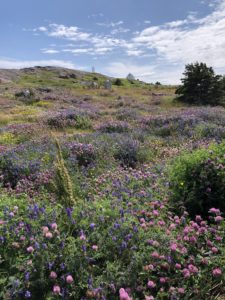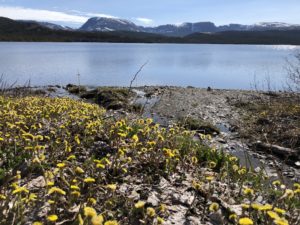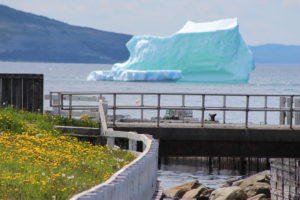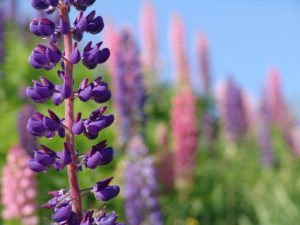Newfoundland exhibits the most diverse array of wildflowers on the planet. An island state located off the east coast of Canada, this country’s many unique (and sometimes bizarre attributes) create a truly spectacular garden whose continuity of blooms splay across the coastal landscape for the entirety of the growing season.

“… cloak of vibrant colours…”
From the first burst of the impatient ‘Colts Foot’ till autumn’s endless stream of ‘St. Michaelmas Daisy’ – Newfoundland is blanketed in a cloak of vibrant colours. Dozens of flowering plants cohabitate among the meager soil deposits, maximizing their reproductive capacity by maintaining a strict chronological order, blooming one after the other, after the other.
Several significant environmental factors greatly enhance these effects – varied terrain, relatively mild winters, salt laden breezes, thin acidic soils, zero competition, and special biological adaptations. But limited agricultural development is what truly makes the difference since there are no herbicides, pesticides, insecticides, fertilizers, or domestic plant competitors on the island.

“… impatient Colt’s Foot…”
Newfoundland was located at the southern most extreme of the ‘Canadian Shield’. During the last ice age, the island was covered with over a mile and a half of ice. Imagine nearly 8000’ of ice, crushing, grinding and scraping every living species from its surface. All the soils, plants, trees, and bushes were wiped clean – right down to the bedrock. An artist always starts with a clean slate, and Newfoundland is the quintessential “Mother” of natural landscapes.
This is also the convergence point for two of the world’s most extremely polarized tidal courses – where the frigid, ice laden waters of the ‘Labrador Current’ come crashing headlong into the warm, tepid flows of the ‘Gulf Stream’. When our winds blow from the south west, Newfoundland truly feels like any other Caribbean island. But when she twirls from the North East – you’ll fully appreciate our deep-seated history in arctic exploration.

“… history in arctic exploration.”
Latitudinally, Newfoundland is located at the same position as Leon, France – thus subjecting the island to a Mediterranean light whose heat energy is best described as both short and extreme.
And the rain! Nearly half the island is covered in fresh water, the aquifers brimming to such extremes that a naturally formed ‘Infinity Pool’ sits atop Signal Hill. With no river in or out, this spring fed pond relies on a perfect balance of precipitation throughout every month of the year.
Wildflowers grow prolifically in this habitat, creating brilliant palettes along every roadside, coastal headland, and glacial plain. This is a naturalist’s paradise and it is our hope that this booklet will provide a better understanding and appreciation for the collusion of circumstances that nurture this bounty.



This will be very interesting.